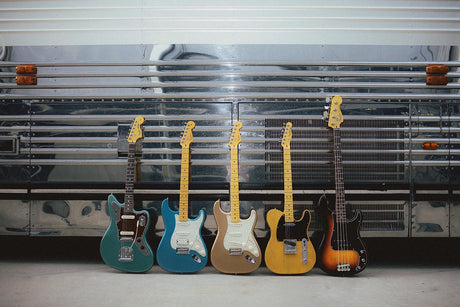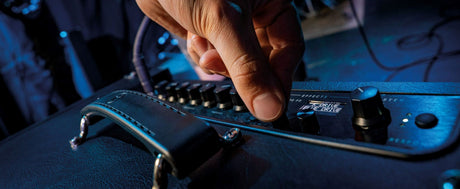The Yamaha CLP-745 and CLP-775 Clavinovas represent the two middle models in the new 700 series. Both boast a raft of new features introduced across the range, including the newly sampled CFX and Bosendorfer grand piano sounds. These are two of the most desirable concert grand pianos in the world, fetching incredibly hefty price tags, and they’ve been painstakingly sampled using brand new technology to ensure that the sound you get from your 700 series Clavinova is expressive and truly authentic.
Whilst these two models share many similarities, there are some really key differences that justify the price gap. The CLP775 is quite a step up and should definitely be considered by more serious players, or those that are looking to take the later grades. The differences can be looked at in terms of action – that is, how the keys feel; the sound, and features.
Action (Feel)
The key action on a digital piano is very important. It’s the point of contact between the player and the instrument. Many pieces require notes to be played quietly, and loudly, so a keyboard that has the right feel and level of sensitivity is crucial for this. Also, most people taking piano lessons are likely to take them on an acoustic piano. The same can be said for piano exams – some may even be sat at a grand piano, so the more your digital piano feels like an acoustic one, the less discrepancy there will be between home practice and lessons and exams.
Both the CLP745 and CLP775 feature weighted keys, as you’d get on an acoustic piano. The CLP745 has the GrandTouch-S action, whereas the CLP775 has the slightly more authentic GrandTouch. Whilst the names are very similar, and both actions feature state-of-the-art mechanics inside, the GrandTouch on the 775 feels more like a full-sized acoustic concert grand piano than the 745. Whilst the keys are the same length from the player’s point of view, they go slightly further into the piano on the 775, making it a little more balanced when you strike a key. Also, they keys have more mass to them, again, making the feel more akin to that of an acoustic concert grand piano.
Another key difference in the feel of the two pianos is that the CLP775 has what’s called 88-key graded linear action. This means that every single key on the piano has a slightly different weight to it. When you think about an acoustic piano, each key triggers a hammer that hits a string – the strings are different thicknesses and are at different tensions, so the weight as you depress a key will be slightly different. That’s what this action authentically replicates. The keys on the CLP745 are weighted in groups, instead of individually.
Speakers (Sound)
These two Clavinova models, whilst fairly similar in size, have two quite different speaker systems on board. The amplifiers and speakers within the CLP775 are more powerful than they are on the CLP745. Not only does this mean that the 775 can be played at louder volumes, it also means that there’s a touch more clarity when it’s played at lower volumes – bigger and more powerful speakers usually mean greater headroom (how much you can turn it up before the sound starts to distort or degrade slightly). Obviously, having more volume means you can fill larger performance spaces without the need for external amplification, but it also means that you’ve got a better home sound system when you pair your phone or tablet with the piano via Bluetooth to listen to music through!
Alongside the CLP775’s six speakers (the CLP745 has four speakers), it also features a transducer that transfers a certain frequency range to the cabinet, so that the whole instrument actually becomes a sound source within itself. It also projects the sound in a different way so that the player and other people in the room experience the sound coming from the piano in different directions – this would be like how you’d experience the sound coming from an acoustic piano. This technology is called Grand Acoustic Imaging.
Features
Both pianos have a range of extra features including Bluetooth, a range of different sounds, on-board effects, built-in songs and more. The CLP775 is a little bigger in size though, so it makes slightly more of a visual statement in the room – these instruments are also pieces of furniture, after all. The 775 also has sleek touch sensor buttons underneath the LCD screen, instead of traditional buttons like on the 745. You can customise these so that the button lamps switch off after use, and only the on/off button remains lit. This helps give the upper model a slightly more modern and contemporary edge.
The CLP775 also has a better right-hand pedal, often referred to as a sustain pedal. The more you press on the pedal, the more it affects the tone – it’s not simply just on or just off. Again, this makes it more like playing an acoustic piano and allows you to play with more expression.
Conclusion
These are two very well-equipped digital pianos and will cater just as well for beginners as they will for more seasoned players. The CLP775 does have a better key action though, thanks to Yamaha’s incredible GrandTouch keyboard and the full 88-key graded linear action. It’s more like playing a concert grand piano, which is ideal if you’re going to be playing one either in your exams or during performances. The GrandTouch-S keyboard on the CLP-745 does stand up very well though. The speaker system on the CLP775 is very impressive too – it’s got the capacity to fill a decent sized room full of rich, powerful, detailed sound, plus its contemporary touch sensor buttons lend an extra touch of style.
If you’re looking around this sort of price range, and you want a digital piano that’s as much like a concert grand as possible, then the CLP775 is the way to go – it will see you all the way up to grade 8, if you’re taking exams. Many may also benefit from its enhanced speaker and amplifier system too. If you’re taking the earlier or mid-level grades, or you simply want a digital piano with a great action, incredible sound and fantastic features, then you won’t be disappointed with the CLP745.









